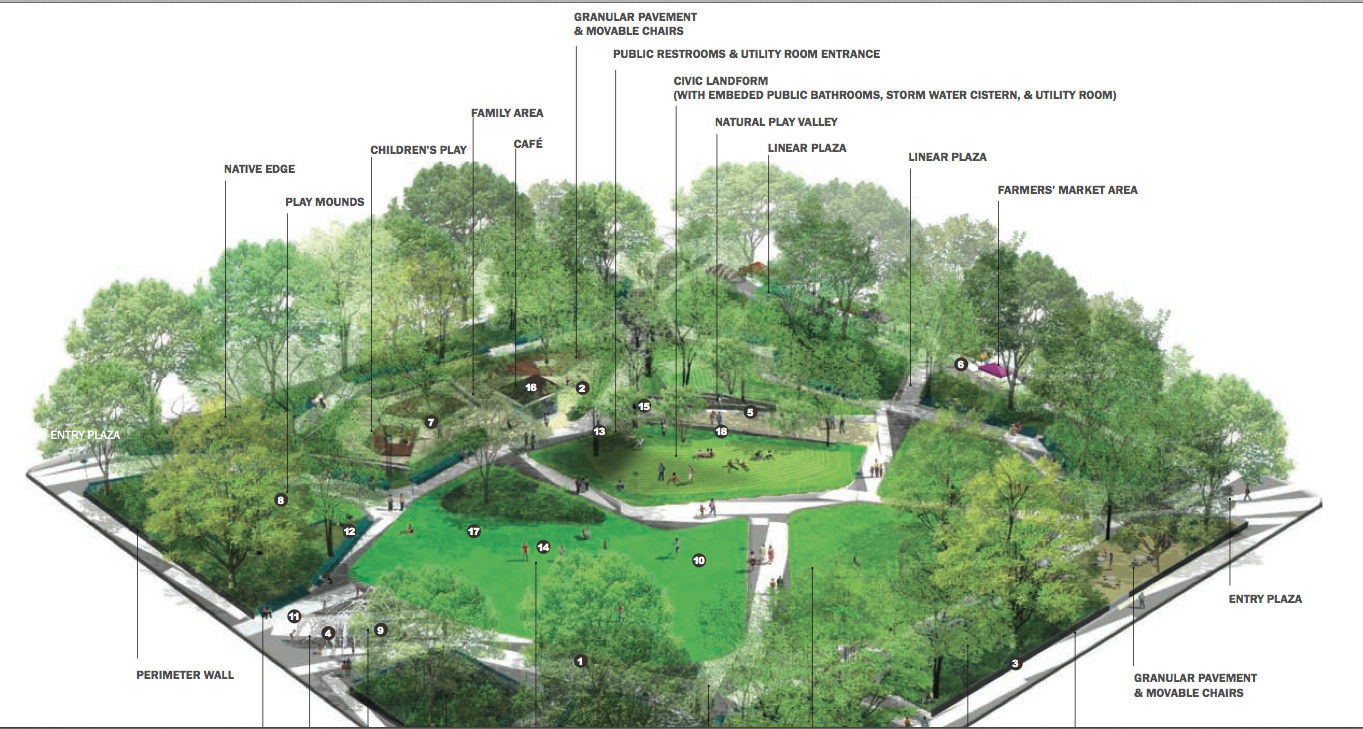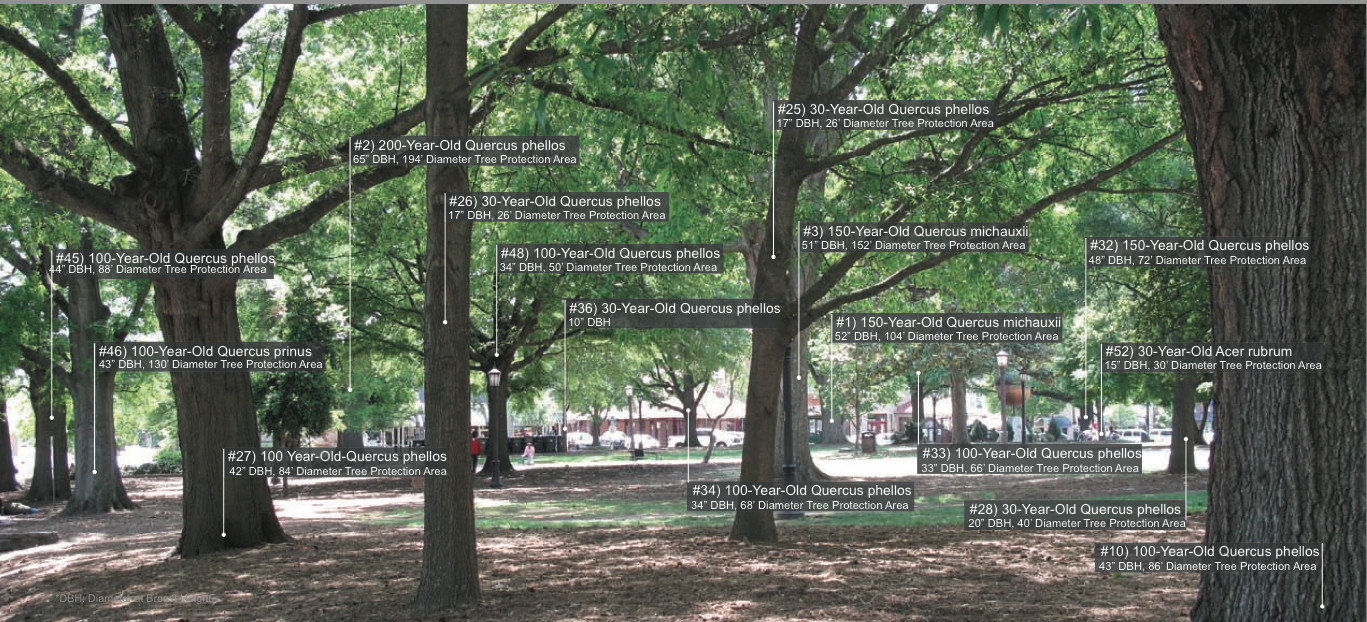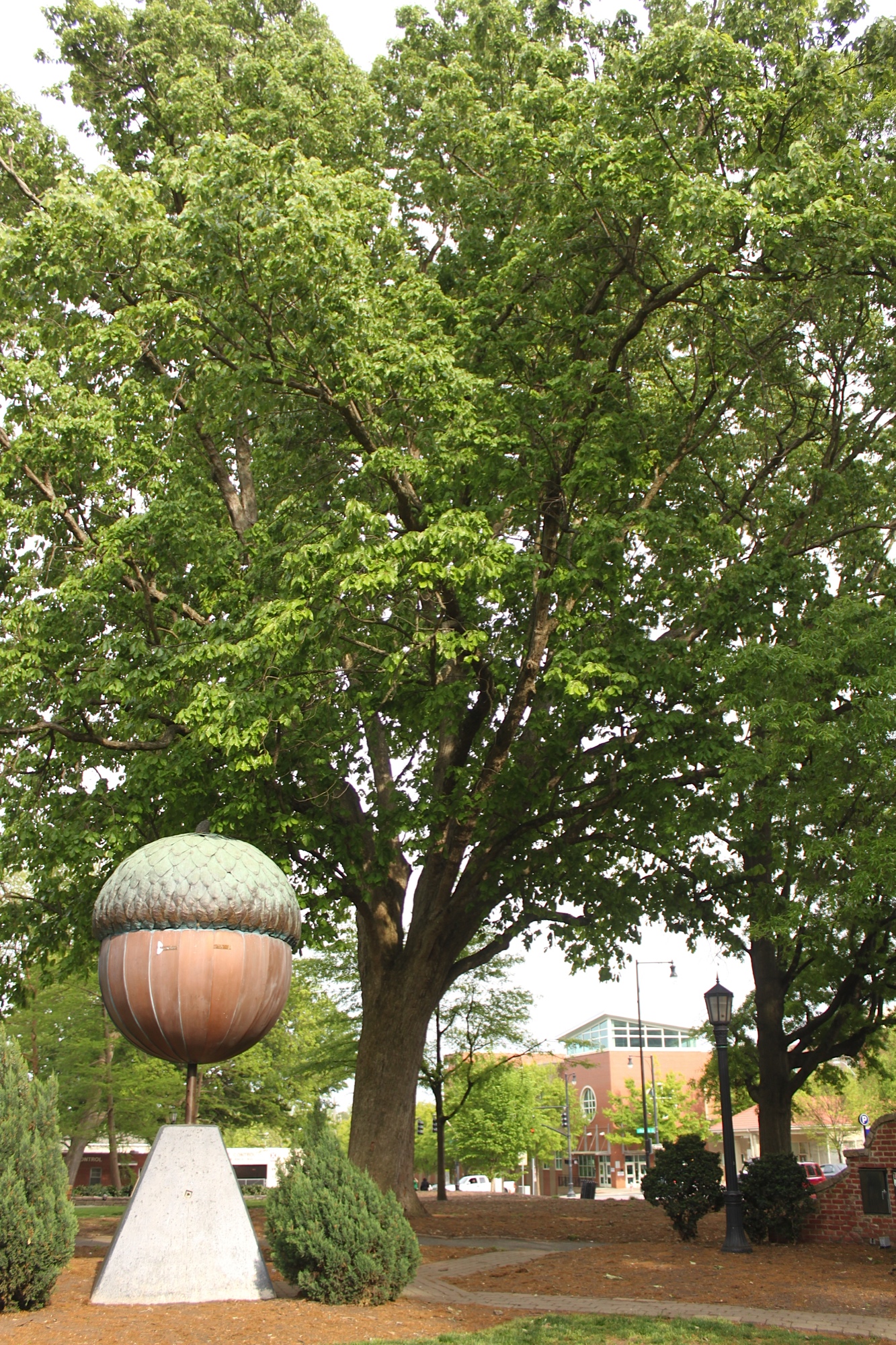Fears about the impact of redevelopment on 68 Moore Square oak and canopy trees can officially be put to rest.
The results of an intensive tree and soil study found no serious problems with the current conceptual plan for downtown Raleigh’s 220-year-old public square. City leaders had feared the $14.8 million plan to upgrade the square could destroy or damage the dozens of trees for which Moore Square is best known.
The plan would transform the downtown square with a civic plaza, central lawn, water feature, concession kiosk, children’s play area and tilted lawn with public restrooms.

Image provided by the city of Raleigh. Click to view larger.
In one of the most in-depth studies of its kind, the report looked 100 years into the future to be sure decisions made today would only improve the square and its trees over time. Now, the city is ready to embark on schematic designs for the four-acre plot, a project hoped to be a catalyst for more redevelopment and activity along downtown’s eastern edge.
“We’ll leave the site better than it is right now,” said Chris Counts, the Brooklyn consultant leading the project.“As we move forward, there’s an ability for everyone to have a sense of confidence and comfort that preservation, both short and long term, leads the evolution of the design.”
That doesn’t mean the project happens any quicker, or that it’s any less complex.
Parks and Recreation is asking for $300,000 from the city’s 2014 budget to begin the eight-month schematic design process. Approval and construction permits will have to be secured from the city and state (which owns the land) before any work can begin.
The city will also have to approve the millions of dollars required for construction. It’s likely that some tree preservation strategies will add to the cost, but that won’t be determined until schematic design is complete.
Project Manager Cassie Schumacher-Georgopoulos expects work to begin in 2016.
Activities such as the comprehensive tree and soil study lengthen the already time-consuming and public planning process of park projects, Schumacher-Georgopoulous said. But they help to ensure renovations happen with the future and environment top of mind.
“Thinking of the trees often comes when you begin construction and put up the fence,” she said. “We’re on the front end to make sure one of the most important assets of the park is preserved.”
For example, the study found many existing issues with the grove of trees. They are old and lack diversity, meaning that 65 percent of the trees will die naturally over the course of the next 50 years and 90 percent will decay within a century.

Image provided by the city of Raleigh.
The Moore Square tree strategy has to factor where and when new trees can be planted without disrupting the dying ones. Construction plans will also have to avoid the future trees’ root and trunk zones.
In addition, 24 trees were flagged for further review. Because of their age, and the weakness that comes with it, they could be a public safety risk in the event of a serious storm or tornado. One tree has since been removed from the southeast corner of the square.
“We’re doing this in a surgical way,” Counts said. “As we get into the specifics of each one of these interventions, paths or improvements to the soil or new types of planting or construction elements, each will be inspected and studied on a tree-by-tree basis.”
New plans also must account for existing soil and root damage from where concrete was poured and people have trampled. The study recommends reusing paths and concrete footings for walls wherever possible to prevent more destruction that could come if concrete is removed.
Additional planting techniques could keep people away from the areas with the most existing damage, so the soil and roots could recover.

The Raleigh acorn sits among the trees in Moore Square.
Construction of the central landform, a tilted lawn, and placement of utilities and stormwater management within it, should happen above the existing ground and outside of root and trunk areas, the study found.
Plant species should be carefully selected so they don’t compete in the at-risk areas around trees.
The plan also calls for changes to the square’s use.
For example, it will no longer hold events of 5,000 or 10,000 people. City Plaza and the Red Hat Amphitheater will be used for those crowds. Moore Square will be limited to events of 3,000 to 4,000 people and those will happen only occasionally throughout the year.
The central lawn will be installed with high-performance materials like sand and will have subsurface drainage, but will be used primarily for picnics and casual use.
There will be periods of time throughout the year that the central lawn will be closed, so the grass and soil can recover.
Many of these practices are also in use by the city of New York in its upkeep and maintenance of Central Park, Counts said.
Final recommendations call for a constant process of evaluating the impact to trees and soil during each step of renovation, and then intensive monitoring of the trees over the next 10 years following the construction.
And every 20 years, new trees will be added and old ones removed, creating the diversity that previous plans for Moore Square lacked.
“The time frame makes sense for these complicated issues,” Counts said. “We’re looking at soils and trees, biology and microbiology of both, and then the social systems and how all those forces interact. The study has been very exciting and informative. We can’t wait to get started.”